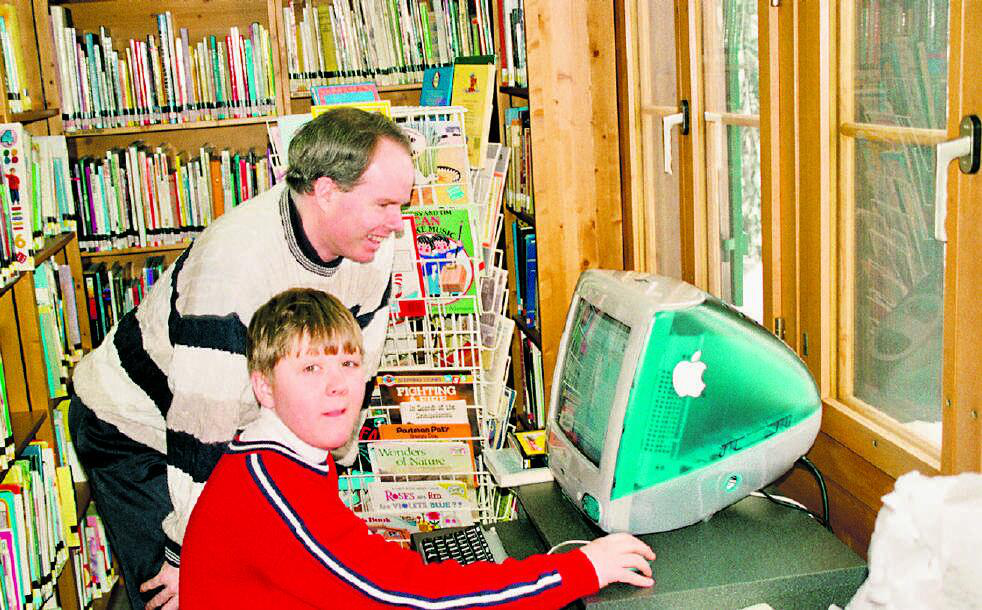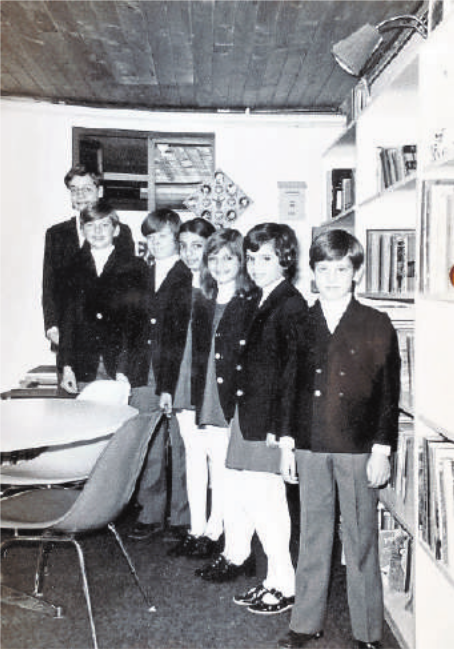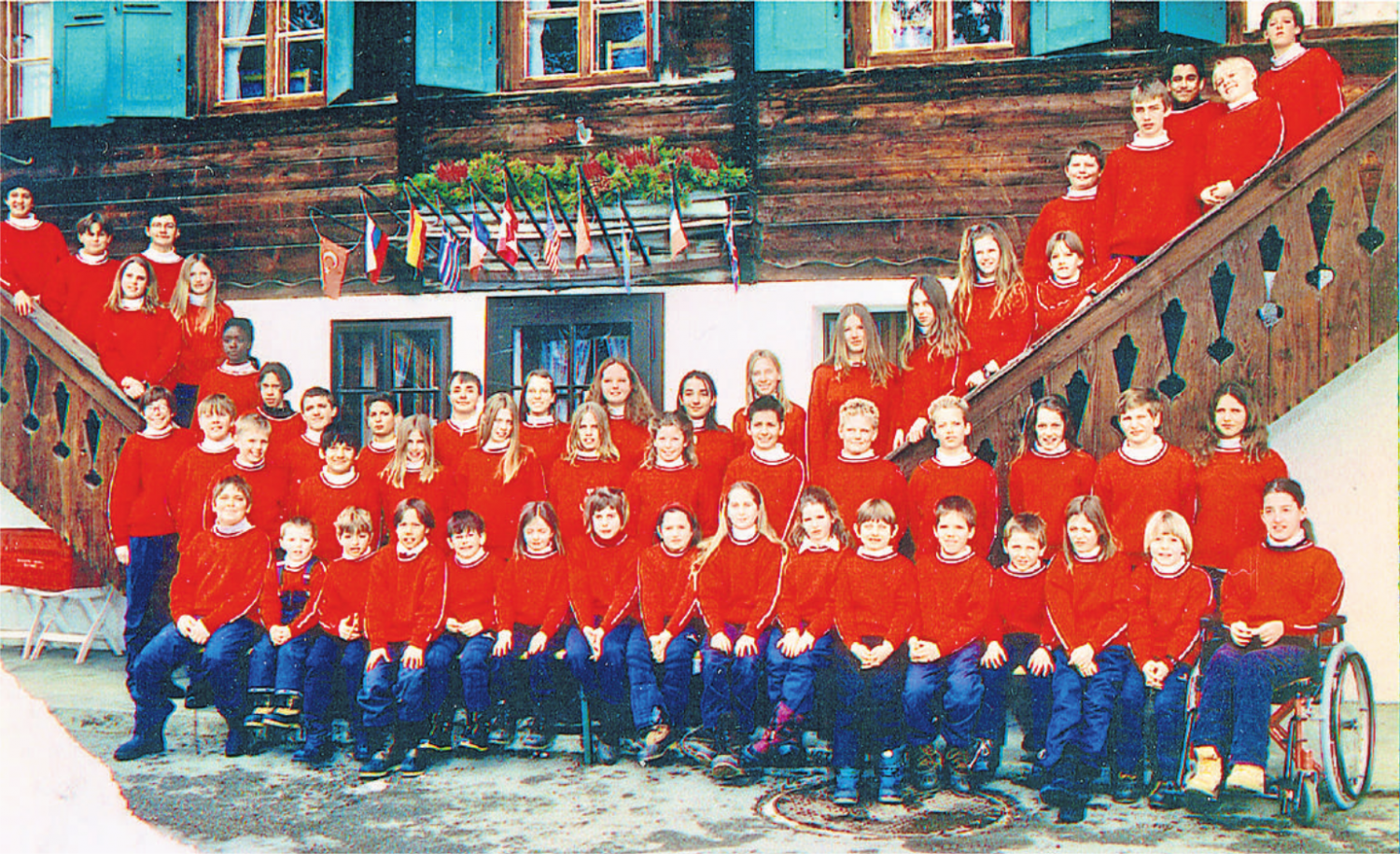Celebrating 50 years of educational excellence
02.07.2022 Gstaad LivingThe 2021-2022 school year marks the 50th anniversary of the John F. Kennedy (JFK) International School in Saanen. Founded in 1971, this small school with a big heart has become a much-loved fixture of the Saanenland community. Today a thriving educational institution serving 95 students representing over 22 nations, its growth from humble beginnings half a century ago is an educational success story. As generations of alumni, parents, staff members, current students and friends celebrate this milestone, GstaadLife offers a retrospective of the school’s achievements.
Small school, big dreams
One day in August 1970, a newly married couple stepped onto a boat and into a new life. Bill and Sandy Lovell were young teachers looking for challenge and adventure beyond their native Canada. An offer to lead the academic programme at a small English-speaking private school in Saanen seemed too good an opportunity to pass up.
Working at the JFK school would be a way to see the world and get paid at the same time. Yet less than a year later the Lovells unexpectedly faced a decision that was to set the tone for the remainder of their working lives.
Children’s home to international school
The seeds of the JFK school were planted twenty years before the Lovells arrived in Switzerland.
In 1950 Enka and Fred Sicking founded Kinderheim Chalet Pfrundacker, a children’s home for Dutch children suffering from respiratory ailments. Children were sent to the Saanenland for the fresh mountain air and tended to stay for only short periods of time or until their health improved. In the early days, the children often studied in the local village school, but in time the Sickings introduced lessons in Dutch, with many students bringing their own school books from the various programmes they were following in Holland.
The 1960s brought two major changes. During this decade the Kinderheim Chalet Pfrundacker became the John F. Kennedy School and by the time the Lovells arrived in 1970, with a trunk packed with teaching materials and big dreams, the language of instruction was English.
The Lovells got down to work: ‘Ms Sandy’ teaching the six to tenyear-olds and ‘Mr Bill’ the children over 11.
But more change was afoot. A few months later the Sickings announced their plans to close the school in the summer of 1971. The Lovells’ short-term plan had overnight become even shorter. Several parents suggested Bill and Sandy continue to run the school and two Canadians, Philip Graham and Strachan Bongard, indicated their willingness to help finance such a project. An arrangement was agreed with the Sicking family early in 1971 and the project to develop the JFK into a modern, progressive, international school began.
Vision
Setting the school’s vision was an important first step. How could they encourage parents to select it as the right start for their children’s academic futures?
The school was established as progressive, but not radically so. The JFK team decided they wanted children to see school as a place where they wanted to be, where they could learn how to learn and view school as a cool, safe place where it was all right to make a mistake. This, together with a strong belief in the worth of each child, expertise in modern educational philosophy and strong support from staff members, parents and the local community set the JFK school on its path.
International curriculum
The first international curriculum was rolled out in September 1971, guided by three criteria: all texts and resources had to be well regarded in other English-language curricula, lend themselves to the individualisation of student learning and promote a global viewpoint.
While certain academic skills were deemed essential to a child’s educational success, from the very beginning experiential learning was favoured over teaching by rote.
Furthermore, learning did not just happen in the classroom. Blessed to be located in the natural beauty of the Saanenland, academic subjects were supplemented by hiking in the autumn, skiing in the winter, and a range of other outdoor and cultural pursuits that taught the children essential life skills beyond what they learned in the classroom.
Crucially, from the very beginning the school encouraged students to take a global view of the world and challenged them to become critical thinkers. This capacity to think outside the box and put themselves in other people’s shoes has long been a hallmark of the JFK educational philosophy.
Educational success story
The key goal of any preparatory school is to prepare its students for the demands of secondary school – wherever that may be. For international schools like the JFK, this brings its own particular challenge as they never know exactly into which system the students will transition. While the majority of JFK students remain in the international school system and go on to join other fine schools like Le Rosey or Aiglon, over the years many have also been accepted into highly prestigious schools in the UK, Canada, the US and other countries around the world.
A common feedback theme has emerged from secondary schools taking JFK graduates: whatever the relative academic strength of the students, they are well-received because they work hard and treat school with respect.
Generations of growth
The JFK International School has come a long way since it first opened its doors.
In 1971 just twelve children were enrolled. For the first few years all classes were held in the original Chalet Pfrundacker, but student numbers started to increase when the school expanded into the Old Post building (on Bahnhofstrasse opposite the Hotel Saanerhof) in 1978/1979. Enrolment continued to climb over the years as additional classroom and boarding space became available, notably the Kleine Alte Schulhaus (1988), the Historic 1880 Saanen School (2000) and the Pavilion (2008). As of 2022 the student body comprises 95 pupils representing 22 different nations, of whom 25 board. A far cry from the nine boarders and three day students who walked through the doors of Chalet Pfrundacker in 1971.
Over the past 50 years more than 3,000 children have been through the school, including many second and even third generation families. This creates a strong bond with the Saanenland and the value of such connections among students and to the region are incalculable. The JFK International School helps to keep the Saanenland alive, each year bringing new families with young children to the region. This introduces the Saanenland and all it has to offer to more people every year, many of whom continue to hold the region in their affections and return year after year, long after they outgrow their school uniforms.
Core values remain
In 2011 the Lovell family retired after 40 years’ service and the school was acquired by the JFK School Foundation. It has continued to go from strength to strength, with the opening of new junior and senior boarding houses and the purchase of Chalet Pfrundacker as well as the addition of student support services.
Although now surrounded by electronic and digital wizardry, the single most important factor in the education process remains the teachers. Under the directorship of Henri Behar, the JFK school continues to be a warm and caring place where children can grow and develop; a place where co-operation and teamwork go hand in hand with the opportunity to compete; where putting forth your best effort is just as important as winning; where developing good communication and problem-solving skills is seen as the key to becoming a productive, responsible, global citizen. Every child entrusted to the JFK school is encouraged to live up to the motto that is inscribed on a beam at the entrance to the school: ‘Of those to whom much is given, much is required.’
Fifty years may have passed since the JFK school’s humble beginnings, but the school remains true to its core values and fundamental character: small classes and family-style environment. No wonder it continues to flourish.
ANNA CHARLES
JFK 50TH ANNIVERSARY CELEBRATIONS
Celebratory events to mark the 50th anniversary of the founding of the John F. Kennedy International School by Bill and Sandy Lovell took place over the weekend of 11–13 February 2022. Participants were treated to school tours; an apéro in the recently restored 1880 Historic Saanen Schoolhouse; participation in the Jubilee-Lovell Cup giant slalom race (with 200 entrants) followed by an ‘Apéro Riche’ at the top of the Eggli; a traditional JFK fondue party and torchlight ski descent; topped off by a fabulous brunch at the Wehren Farm.
The pride felt by all that the JFK has developed into a worldclass, modern international school and recognition of the ‘nobody wins alone’ philosophy that brings the JFK student body and staff together were two of the recurring themes throughout the weekend.
TIMELINE OF KEY EVENTS
1950: Children’s home founded by Mr & Mrs Sicking in Chalet Pfrundacker.
1960: Name changed to John F. Kennedy School. Classes offered in English.
1970: Bill and Sandy Lovell arrive to run the academic programme.
1971: The Lovells take over the JFK school with 12 children enrolled (nine boarders and three day students).
1972: Cathy Lovell joins the JFK team and serves as Director of Administration.
1978–1979: The Old Post building is added. Student enrolment: 40
1988–1990: Enrolment hits more than 50.
1999–2000: Historic 1880 Saanen School building is acquired. The JFK School Foundation is established.
2010: Enrolment reaches 90.
2011: Lovell family retires after 40 years. School is acquired by the JFK School Foundation.
2020: Historic Saanen School is dedicated as the George Livanos building.
2021/2022: The John F. Kennedy International School turns 50.









